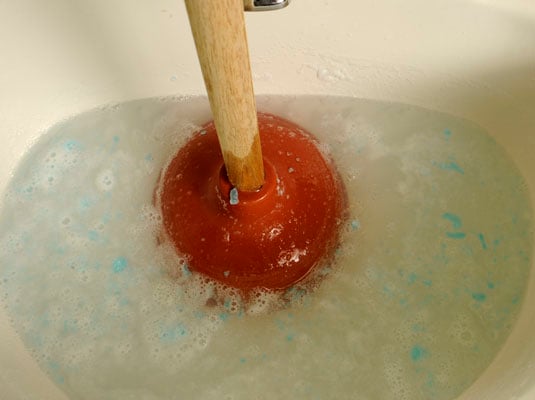We have noticed the article pertaining to How to Use a Plunger to Unclog a Toilet or Drain down the page on the web and concluded it made good sense to discuss it with you over here.

Intro
Appropriate upkeep of family drains pipes is essential for stopping obstructions and guaranteeing smooth water flow. One of the trick devices in every home owner's toolkit is the plunger, alongside various drain cleaners created to deal with persistent blockages effectively. This short article discovers just how to utilize bettors and drain cleaners effectively to maintain your drains pipes moving openly.
Area 1: Recognizing Plungers
Sorts of Plungers
There are a number of types of bettors offered, each developed for various kinds of drains and blocks. One of the most common kinds include mug plungers, flange plungers, and accordion plungers.
Just How Plungers Work
Bettors service the concept of creating pressure and suction to dislodge obstructions. When appropriately applied over a drain, they produce a vacuum cleaner that can pull out particles or separate blockages.
Selecting the Right Plunger
Picking the best bettor depends on the sort of drain and the nature of the blockage. Mug plungers are ideal for sinks and tubs, while flange plungers are better matched for toilets because of their layout.
Typical Blunders with Plungers
Preventing these errors makes sure efficient plunging: inappropriate seal around the drainpipe, inadequate force, and not clearing surrounding debris.
Area 2: Utilizing Plungers Properly
Preparation
Prior to diving, guarantee the bettor covers the drainpipe entirely and forms a tight seal. Clear any type of noticeable particles around the drainpipe opening.
Strategy
Begin with gentle diving movements to build suction. Increase pressure slowly, making use of a stable rhythm. Repeat as needed until the drain removes.
Fixing Tips
If diving doesn't work, try changing the seal, using oil jelly for a better seal, or making use of a different sort of plunger.
Section 3: Understanding Drainpipe Cleaners
Kinds Of Drain Cleaning Company
Drain cleansers can be chemical or chemical. Chemical cleansers utilize solid chemicals to liquify blockages, while enzymatic cleaners make use of all-natural enzymes to break down organic matter.
Just How Drainpipe Cleansers Work
Chemical cleansers react with blockages to dissolve them, while enzymatic cleaners break down natural products like hair and grease without damaging pipelines.
Security Factors to consider
Always put on gloves and eye defense when using chemical drain cleansers. Make sure adequate ventilation and follow supplier instructions carefully.
Eco-Friendly Alternatives
Take into consideration using vinegar and baking soda or enzyme-based cleansers for eco-friendly choices that are much safer for pipelines and the environment.
Section 4: Using Drain Cleansers Successfully
Application Strategies
Put chemical cleaners straight right into the drainpipe opening. Enable them to work for the recommended time prior to purging with hot water. Enzymatic cleaners need to rest over night.
Safety measures
Avoid blending various kinds of cleansers, as this can create hazardous fumes. Never use chemical cleaners in conjunction with a bettor, as spilling can occur.
Taking Care Of Stubborn Obstructions
For persistent blockages, consider utilizing a plumbing snake or calling a specialist plumbing to stop damage to pipes.
Verdict
To conclude, recognizing how to make use of bettors and drain cleaners effectively is important for keeping healthy plumbing systems. By choosing the right devices and methods, homeowners can tackle small obstructions and protect against major plumbing problems down the line.
4 DIY Ways to Unclog Drains
Wire Hanger
This age-old technique has been used by many an amateur plumber – to much success. Take any wire hanger, deconstruct its shape and leave a small hook shape on the end. Time to go fishing! Remove the shower or sink drain cover and snake the wire into the drain, wiggling and rotating it as you push it through. Dispose of the gunk that you remove and flush the drain with hot water. Rinse with a pan of boiling water for best results.
Plunger
Creating a suction in your drain can break up clogs caused by hair and soap residue build up. First, make sure you are using the correct type of plunger, one specifically for sinks or tubs. They are typically smaller than regular toilet plungers and often have a shallow suction cup. Regular plungers can work too but we’d recommend cleaning them first and finding a way to create better suction over the drain.
Baking Soda and Vinegar
This technique is a classic – and one of the most popular DIY drain unclog methods. Pour one cup of baking soda and one cup of vinegar down the drain and allow it to work its magic overnight. The next morning, flush the drain with boiling water. Repeat if necessary.
Drain Snake/Hair Clog Tool
If you know your clog is caused primary by hair, a drain snake/hair clog tool might be your best option. These tools can be purchased for under $10 at any hardware store and work well so long as the clog isn’t too deep in the drain.
https://www.callcatons.com/blog/four-diy-ways-to-unclog-drains/

I found that piece about How To Use Your Toilet Plunger Correctly in 5 Easy Steps when perusing the search engines. Appreciated our piece of writing? Please share it. Let someone else find it. Thank you so much for your time spent reading it.
At This Website
Comments on “Efficient Plungers and Drain Cleaner Methods: Key Practices”